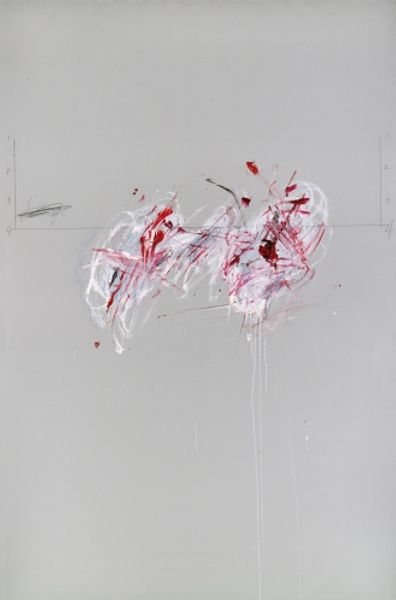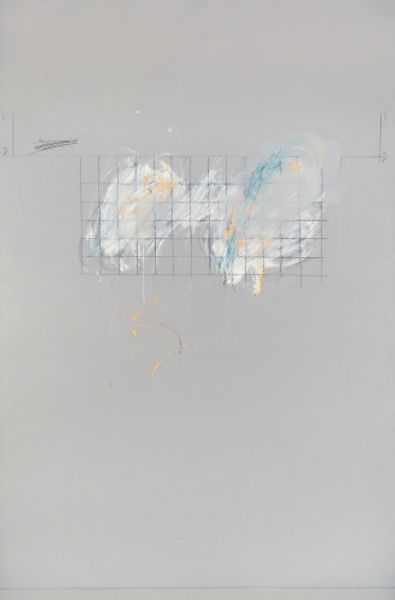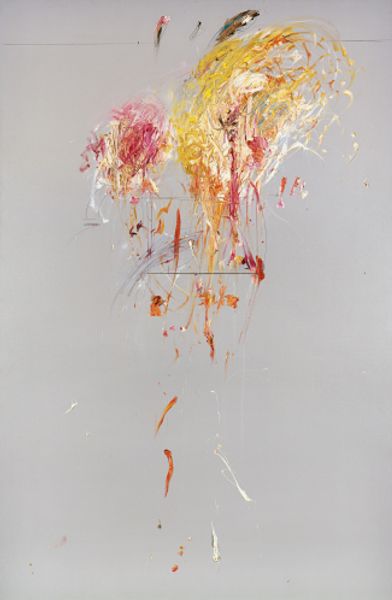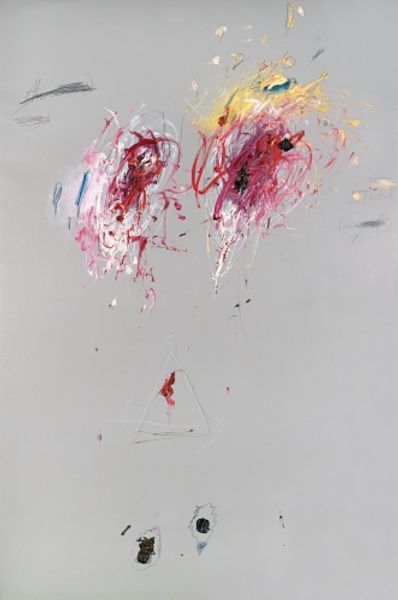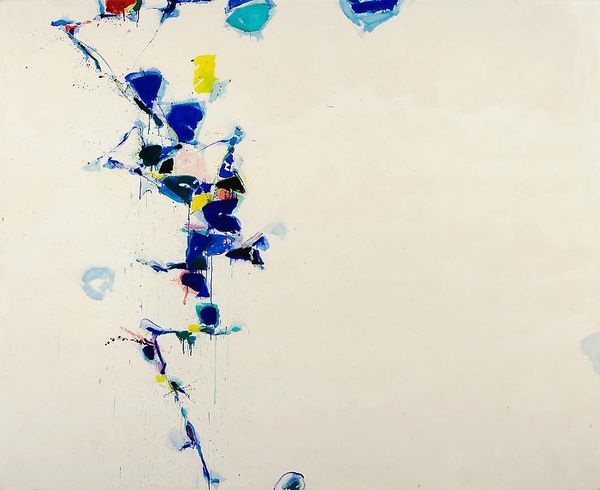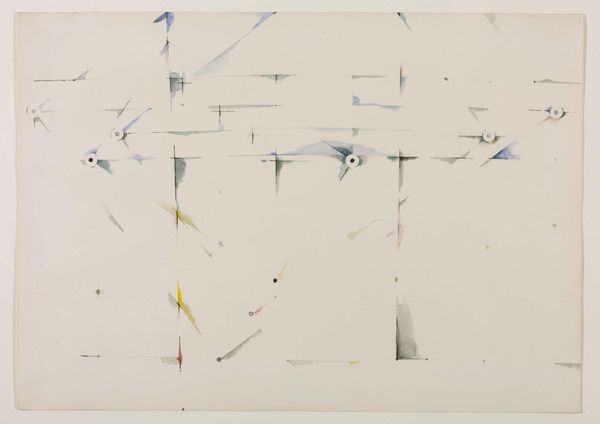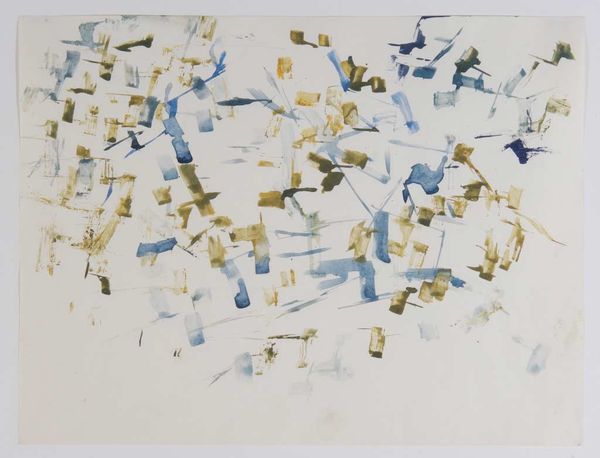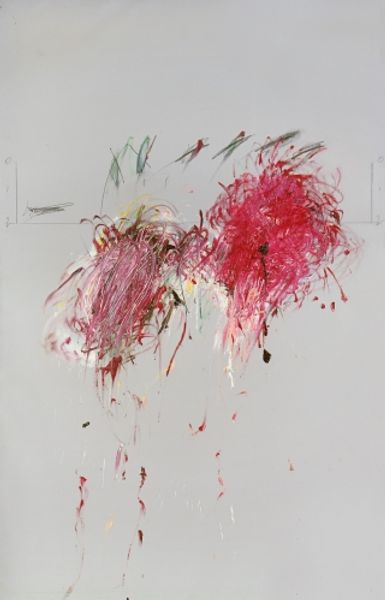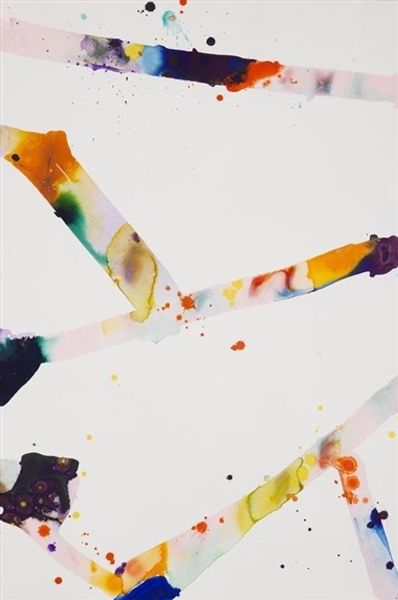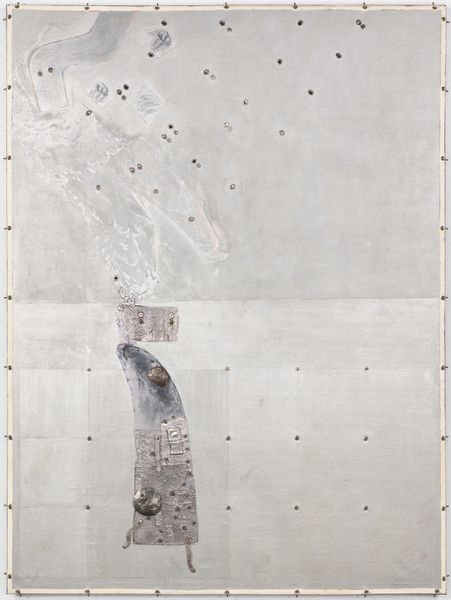
mixed-media, painting, acrylic-paint
#
abstract-expressionism
#
abstract expressionism
#
mixed-media
#
abstract painting
#
painting
#
acrylic-paint
#
form
#
neo expressionist
#
black-mountain-college
#
abstract-art
#
abstraction
#
line
#
abstract art
#
modernism
Copyright: Cy Twombly,Fair Use
Curator: Editor: I'm looking at Cy Twombly’s "Nine Discourses on Commodus, Part VI," created in 1963, a mixed media piece using acrylic paint. It strikes me as very gestural, almost frantic. The composition feels quite raw and unfinished. What stands out to you about this piece? Curator: For me, it's the clear demonstration of labor, and its almost aggressive materiality. We see the application of the acrylic paint, the way the artist moved the medium across the canvas. The scribbles, the lines, the drips - these aren’t just abstract marks, they're physical traces of Twombly’s actions, of a body in motion. Think about the process of making here. Does it suggest any kind of statement about art production to you? Editor: Well, the title referencing Commodus seems to hint at some kind of commentary, maybe relating to the production and consumption of power. Are you suggesting the process is the power here? Curator: Precisely! Look at the repetition in the upper registers. Could that rhythmic placement signify something about industrialized modes of production? Or consider the frenzied energy contrasted against those very clean horizontal lines. The "high art" gesture collides with a mechanic mark. It makes you wonder what he might have been challenging about the art world, about his own labor within it, in the '60s. Editor: I see your point. It's almost like he's deliberately exposing the raw mechanics of creation, forcing us to acknowledge the materiality rather than just appreciating the image. Curator: And by extension, the commodification of the artwork itself, and his role in that system. Are we not just consuming the final product, but also the myth of the tortured artist? Editor: It does make you consider the socio-economic context of its creation, and how that impacts our perception of it now. It shifts it from just an abstract image into a kind of material record of its making. Curator: Yes, exactly. The layers of meaning become more pronounced when we start looking at how it's made, where it came from, and who it's for. Editor: This gives me so much to think about! Curator: Likewise. It highlights how materiality actively shapes the art historical and social meaning.
Comments
No comments
Be the first to comment and join the conversation on the ultimate creative platform.
